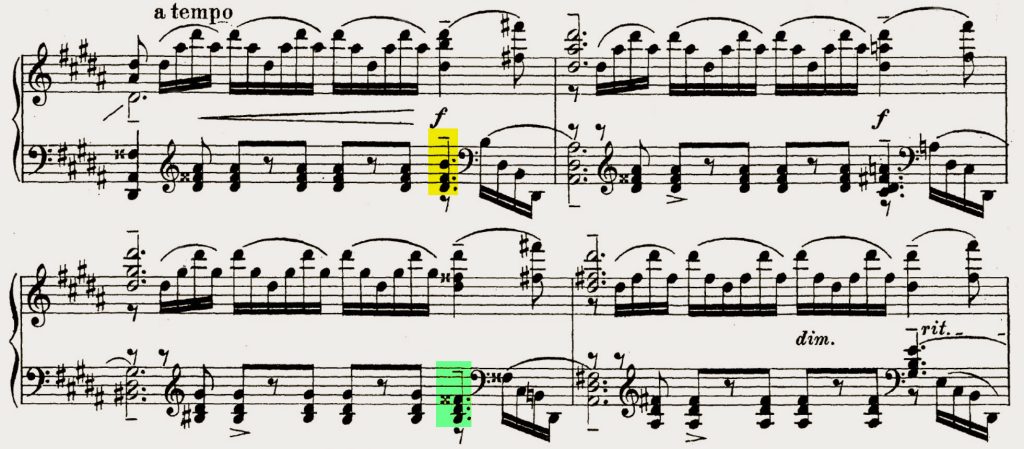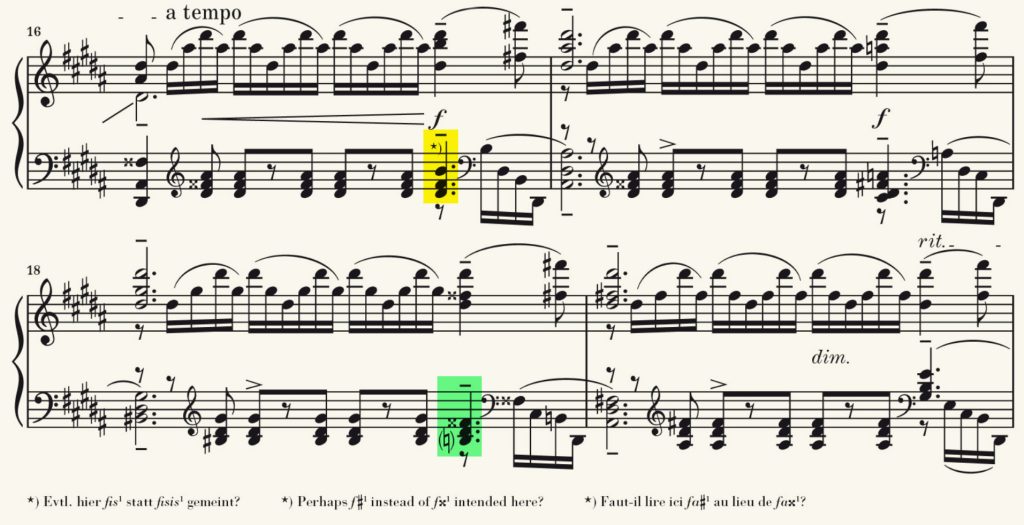
In the Henle blog we have already published several posts on the Sergei Rachmaninoff topic (see here), but posting on him should certainly not be lacking this year. The composer is, after all, celebrating his 150th birthday in 2023, which calls for our special attention. For the anniversary year we shall publish not only several brand-new Rachmaninoff Urtext editions (for example, you can look forward to his Paganini Rhapsody and Third Piano Concerto), but we have also planned an extra surprise…
The “Rachmaninoff at Henle” edition project will, incidentally, soon be marking a milestone birthday as well: Published nearly 10 years ago – in January 2014 – were our first Rachmaninoff Urtext editions, to be met immediately with great approval by pianists all over the world. Since then, owing to the great demand, especially the much-loved and often-played 24 Préludes (HN 1200) and Études-Tableaux (HN 1202) have already had to be reprinted several times. This has encouraged us to prepare for all Rachmaninoff fans a little surprise in honour of the anniversary: Both the 24 Préludes and the Études-Tableaux will additionally appear this summer in elegant, cloth-bound versions (HN 1520 and HN 1521).
As editors of an Urtext publishing house, we are particularly pleased when many musicians and purchasers of our editions contact us, wishing to point out questionable passages or discuss ambiguous readings. If, as very rarely, a genuine printing error is to be found, we do, of course, immediately correct it within the next edition issue. Just in Rachmaninoff’s case, though, the matter of ‘right’ or ‘wrong’ is often difficult to determine, since his dazzling and complex harmonies allow for various solutions.
Here, I would like to present two examples from the Rachmaninoff Préludes, pointed out to me by pianists after the edition’s first issue was published. In both instances, I, as editor, have decided not to intervene in the original music text, but to add new footnotes, indicating the problems in each case and encouraging pianists to cogitate and come to their own decisions.
In the first case, it was none other than Boris Giltburg who signalled to us a possibly missing accidental in the E-flat minor Prelude. In measure 23, the 1st chord is notated in the work’s first edition as follows (see the yellow highlighting):

Rachmaninoff, Prélude in E-flat minor, op. 23, no. 9, first edition, A. Gutheil 1903/04, mm. 21–23
From the key signature the right-hand’s lower note without any accidental is, hence, a d-flat2, resulting in a pure B-flat minor chord. This is exactly what is written in the autograph and is also printed thus in our edition. Suspecting an oversight on the part of the composer – it seems, in fact, not uncommon for Rachmaninoff to forget accidentals because he is no longer considering the key signature, – Boris Giltburg argues strongly for d2 instead of d-flat2, that is, for a B-flat major chord instead of the tonally unusual modal resolution to B-flat minor. Other valid reasons suggesting d2 are the analogous passage in m. 9 (likewise with d2), as well as the cautionary accidental before the 5th note of the right hand in m. 23 – why would Rachmaninoff notate an extra flat accidental here if he had not previously had a d in mind?
Several later editions have indeed therefore tacitly added a natural sign before the note, such as this Soviet edition by Pavel Lamm:

There are, nevertheless, also good arguments against a change, such as, for example, a cautionary flat sign in m. 23 before the 4th note c-flat2, without having had a c directly before it (in m. 22 there is a c2 on beat 3, but the left hand already has c-flat1 again on beat 4). Perhaps both cautionary signs are only brought about by the natural sign before the 2nd note in m. 23. Moreover, m. 9 is only roughly similar to m. 23, but not really a parallel passage; for example, the climax in m. 9 is on the 1st chord, whilst in m. 23 the phrase “overshoots the goal”, so to speak, and only culminates on beat 2 (the d-flat3!) – see also the different dynamics and continuation of the respective passage.
Therefore, I have chosen the “Solomonic” solution of a footnote, leaving the decision of a change up to pianists themselves:

Rachmaninoff, Prélude in E-flat minor, op. 23, no. 9, new edition, G. Henle, 2014, mm. 21–23
I owe the second reference to the pianist Mark Sullivan from California. Some time ago he wrote me about a possible missing accidental in the G-sharp-minor Prélude, op. 32, no. 12. When comparing sources during my editing work in 2013, I had already noticed that in m. 18 on the last, left-hand beat, a b must surely be meant, even if the natural sign is missing in both the autograph and first edition (see the green highlighting in the music example):

Rachmaninoff, Prélude in G-sharp minor, op. 32, no. 12, first edition, A. Gutheil 1910/11, mm. 16–19
Apart from the fact that the b-sharp minor chord notated here would be tonally very dubious in the context, the B in the immediately following sixteenth-note figure shows that it is surely just an oversight. For this reason, I have added a natural sign in m. 18, though putting it in parentheses as an editorial addition:

Rachmaninoff, Prélude in G-sharp minor, op. 32, no. 12, new edition, G. Henle, 2014, mm. 16–19
Mark Sullivan’s plausible assumption is now that an accidental is also to be added in the analogous place in m. 16 (see the yellow highlighting), namely a sharp sign before the f-sharp1 (instead of f-double sharp1 as before). This question can alas be answered less clearly by the musical context than that in the previous case. The clash of (harmonic) f-double sharp1 in the left hand and (melodic-motivic) f-sharp2/f-sharp3 in the right hand is in any event still no reason for suspicion, for this also happens in m. 18. The explicit cautionary accidentals before the last right-hand chord in m. 16 (these sharps are not actually necessary) could even be an indication of just this deliberately intended cross relation.
A strong argument for Sullivan’s hypothesis is, however, given by Rachmaninoff himself in his own recording of the G-sharp minor Prélude – there, I hear f-sharp1:
To be sure, this recording was made in 1921, more than 10 years after the composition of the piece. It is well known that in later years Rachmaninoff took small liberties in interpretating his own works, incorporating new variants, up to and including complete revisions (think of his Second Piano Sonata…). It is quite possible that he still meant and played f-double sharp1 at the time of composition and first edition. Therefore, in doubt here, I have opted for the source’s notation and simply referred to the possible f-sharp1 with a footnote.
Which variants would you favour in each case? Are there any other arguments about accidentals, pro or con, or what is your musical “feeling” here? Write us a comment!

I tend to think the composer’s latest documented edition should be preferred version, especially if we have it as performed by the composer him/her self. What a luxury in this instance. (It also signifies that he himself is aware this is a trouble spot.) Accidentals that appear and disappear may be the composer negotiating with himself.
Thank you for all the wonderful work about Rachmaninov. He has long been my favorite to play and listen to. I greatly appreciate the technical detail and the clarity of print of your editions and the all information in your Blog. When I first started playing Rachmaninov and Scriabin (my #2 favorite) —let’s say 40+ years ago—-the complexity of the music and lower printers’ tech resulted in other companies’ editions being garbled at best. It is such a joy to play these pieces once again with an ease and certainty I previously did not have. Your editions are a true treasure!!!
My thanks for all you do!!!
Christian Lanier
Amateur Pianist & Composer
Attorney At Law, Day Job
Hello, I was wondering if you could enlighten on the differences between editions of the D minor etude in the appendix of the Henle Etude Tableau. It seems that other editions presumably by Pavel Lamm have few differences compared to Henle. I had previously posted my question on the blog post “A wrong ‘D’ goes out into the world – Rachmaninoff’s Prélude in c sharp minor under the magnifying glass”. Thank you in advance. I understand that you are busy. Any information is appreciated.
Hello, please see my reply here!
Hello,
I have a copy of the Peters edition of Rachmaninoff ‘s preludes that were edited by the late Ruth Laredo.
If I understand her statement in the preface correctly, Laredo used her own judgment to remove a lot of articulations that are found in the Gutheil edition, to the point that the score looks very barren in comparison to most other editions, including Henle. She felt that these articulations were added by someone else given that Rachmaninoff’s writing tended to be rather austere. Laredo did not have access to the Glinka museum autographs when she worked on the Peters edition, but she later had the occasion to visit that museum and she stated in an interview that the autograph corroborated most of her editorial decisions.
What is your take on this, given that you had the opportunity to examine the autograph and the galley proofs for yourself when you were preparing the Henle edition? Many thanks.
Hello,
I have a copy of Ruth Laredo’s edition from 1985 in my library as well and I have just re-read her preface. As she states herself, her edition is based on her „instinct“, not on philology (for lack of original sources), and I’m afraid her instinct was plain wrong…
It is not by chance that Karl Gutheil was Rachmaninoff’s almost exclusive publisher for decades, from the very beginning with Opus 1 in 1892, until 1915 when Gutheil sold his business to Serge Koussevitzky. Rachmaninoff proof-read and authorized all his editions by Gutheil, and when I prepared my new editions and went to Moscow to compare the autograph sources to the first editions, I found the latter to be absolutely reliable and very faithful to the composer’s autographs (apart from the occasional engraver’s mistake like a forgotten accidental or a misplaced slur). This was the case not only for the Preludes, but also for the Etudes-Tableaux, the Second Sonata, the Piano Concertos etc.
The autographs of the Preludes are not accessible online, but you can find many facsimile pages in Valentin Antipov’s edition (Sergej Vasilʹevič Rachmaninov. Critical edition of the complete works. Vol.17: 24 Préludes. Ed. by Valentin Antipov. Moscow: Russian Music Publishing, 2006). Also, the Glinka Museum has published a facsimile of the autograph of the C-sharp-minor-Prelude (see https://search.worldcat.org/de/title/17704392). Maybe you can find a copy in a library near you and study the manuscripts, to see for yourself that no-one „tampered with Rachmaninoff’s score“, as Laredo presumed.
Hope that helped! Best regards, Dominik
That was an incredibly thorough, thoughtful, and convincing response! Thank you for taking the time. I will certainly be checking out the references you mentioned and I thank you for your great work on the Henle edition